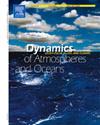Moisture build-up and thermodynamic processes in precipitation regimes during the southwest monsoon over a tropical coastal region
IF 2
4区 地球科学
Q2 GEOCHEMISTRY & GEOPHYSICS
引用次数: 0
Abstract
The thermodynamical and microphysical characteristics of precipitation systems in shallow, Bright Band (BB), and Non-Bright Band (NBB) categories over a coastal site in Thiruvananthapuram, India were investigated. Radar reflectivity and fall velocity profiles, and surface rain rates were utilized to categorize the precipitation systems in June-July 2022. Shallow and NBB events exhibit a significant increase in humidity within the 4–8 km layer around 10–20 min prior to the onset of precipitation. In contrast, BB events maintain a deeper humid layer extending from the surface up to 8 km, with high liquid water content observed at least 30 min before precipitation, supporting widespread precipitation over the coastal region. In both NBB and shallow events, a sharp increase in liquid water path, integrated water vapor, and convective available potential energy (CAPE) occurred ∼10 min before rainfall onset. The substantially higher magnitudes of moisture and instability parameters in NBB systems indicate convective development, while the relatively lower values in shallow systems reflect weak instability and limited vertical growth, resulting in short-lived, low-intensity precipitation. BB systems maintained elevated and steady moisture with minimal variation in CAPE, supporting prolonged stratiform rain. The study shows that shallow systems are primarily influenced by low-level moisture, whereas BB and NBB systems rely on deeper mid- and upper-tropospheric moisture to sustain precipitation. CAPE influences rain rates and raindrop size distributions, with NBB events pronounced response, marked by intense rainfall and broader drop spectra.
热带沿海地区西南季风降水过程中的水汽积累和热力过程
研究了印度Thiruvananthapuram沿海站点浅层、明亮带(BB)和非明亮带(NBB)降水系统的热力和微物理特征。利用雷达反射率、下降速度剖面和地表降雨率对2022年6 - 7月的降水系统进行了分类。在降水开始前10-20 min左右,浅层和NBB事件在4-8 km层内表现出显著的湿度增加。相比之下,BB事件维持了从地表延伸至8 km的较深湿润层,在降水前至少30 min观测到高液态水含量,支持沿海地区的广泛降水。在NBB和浅层事件中,液态水路径、综合水汽和对流有效势能(CAPE)在降雨开始前约10 min急剧增加。NBB系统中较高的水汽和不稳定参数值表明对流发展,而浅层系统中相对较低的数值反映了较弱的不稳定和有限的垂直增长,导致短时、低强度降水。BB系统在CAPE变化极小的情况下保持了较高和稳定的湿度,支持了长时间的层状雨。研究表明,浅层系统主要受低层水汽的影响,而BB和NBB系统则依赖较深的对流层中高层水汽来维持降水。CAPE影响降雨率和雨滴大小分布,NBB事件响应明显,降雨强度大,雨滴光谱宽。
本文章由计算机程序翻译,如有差异,请以英文原文为准。
求助全文
约1分钟内获得全文
求助全文
来源期刊

Dynamics of Atmospheres and Oceans
地学-地球化学与地球物理
CiteScore
3.10
自引率
5.90%
发文量
43
审稿时长
>12 weeks
期刊介绍:
Dynamics of Atmospheres and Oceans is an international journal for research related to the dynamical and physical processes governing atmospheres, oceans and climate.
Authors are invited to submit articles, short contributions or scholarly reviews in the following areas:
•Dynamic meteorology
•Physical oceanography
•Geophysical fluid dynamics
•Climate variability and climate change
•Atmosphere-ocean-biosphere-cryosphere interactions
•Prediction and predictability
•Scale interactions
Papers of theoretical, computational, experimental and observational investigations are invited, particularly those that explore the fundamental nature - or bring together the interdisciplinary and multidisciplinary aspects - of dynamical and physical processes at all scales. Papers that explore air-sea interactions and the coupling between atmospheres, oceans, and other components of the climate system are particularly welcome.
 求助内容:
求助内容: 应助结果提醒方式:
应助结果提醒方式:


